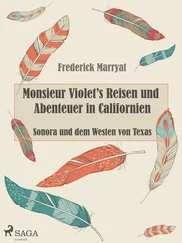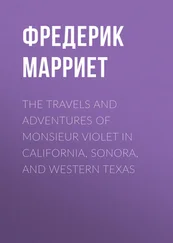Фредерик Марриет - Travels and Adventures of Monsieur Violet
Здесь есть возможность читать онлайн «Фредерик Марриет - Travels and Adventures of Monsieur Violet» — ознакомительный отрывок электронной книги совершенно бесплатно, а после прочтения отрывка купить полную версию. В некоторых случаях можно слушать аудио, скачать через торрент в формате fb2 и присутствует краткое содержание. Жанр: Путешествия и география, Юмористические книги, foreign_antique, foreign_humor, на английском языке. Описание произведения, (предисловие) а так же отзывы посетителей доступны на портале библиотеки ЛибКат.
- Название:Travels and Adventures of Monsieur Violet
- Автор:
- Жанр:
- Год:неизвестен
- ISBN:нет данных
- Рейтинг книги:3 / 5. Голосов: 1
-
Избранное:Добавить в избранное
- Отзывы:
-
Ваша оценка:
- 60
- 1
- 2
- 3
- 4
- 5
Travels and Adventures of Monsieur Violet: краткое содержание, описание и аннотация
Предлагаем к чтению аннотацию, описание, краткое содержание или предисловие (зависит от того, что написал сам автор книги «Travels and Adventures of Monsieur Violet»). Если вы не нашли необходимую информацию о книге — напишите в комментариях, мы постараемся отыскать её.
Travels and Adventures of Monsieur Violet — читать онлайн ознакомительный отрывок
Ниже представлен текст книги, разбитый по страницам. Система сохранения места последней прочитанной страницы, позволяет с удобством читать онлайн бесплатно книгу «Travels and Adventures of Monsieur Violet», без необходимости каждый раз заново искать на чём Вы остановились. Поставьте закладку, и сможете в любой момент перейти на страницу, на которой закончили чтение.
Интервал:
Закладка:
Chapter Four
The Shoshones, or Snake Indians, are a brave and numerous people, occupying a large and beautiful tract of country, 540 miles from east to west, and nearly 300 miles from north to south. It lies betwixt 38 degrees and 43 degrees north latitude, and from longitude 116 degrees west of Greenwich to the shores of the Pacific Ocean, which there extend themselves to nearly the parallel of 125 degrees west longitude. The land is rich and fertile, especially by the sides of numerous streams, where the soil is sometimes of a deep red colour, and at others entirely black. The aspect of this region is well diversified, and though the greatest part of it must be classified under the denomination of rolling prairies, yet woods are very abundant, principally near the rivers and in the low flat bottoms; while the general landscape is agreeably relieved from the monotony of too great uniformity by numerous mountains of fantastical shapes and appearance, entirely unconnected with each other, and all varying in the primitive matter of their conformation.
Masses of native copper are found at almost every step, and betwixt two mountains which spread from east to west in the parallel of the rivers Buona Ventura and Calumet, there are rich beds of galena, even at two or three feet under ground; sulphur and magnesia appear plentiful in the northern districts; while in the sand of the creeks to the south, gold dust is occasionally collected by the Indians. The land is admirably watered by three noble streams—the Buona Ventura, the Calumet, and the Nú eleje sha wako, or River of the Strangers, while twenty rivers of inferior size rush with noise and impetuosity from the mountains, until they enter the prairies, where they glide smoothly in long serpentine courses between banks covered with flowers and shaded by the thick foliage of the western magnolia. The plains, as I have said, are gently undulating, and are covered with excellent natural pastures of mosquito-grass, blue grass, and clover, in which innumerable herds of buffaloes, and mustangs, or wild horses, graze, except during the hunting season, in undisturbed security.
The Shoshones 6 6 The American travellers (even Mr Catlin, who is generally correct) have entirely mistaken the country inhabited by the Shoshones. One of them represents this tribe as “the Indians who inhabit that part of the Rocky Mountains which lies on the Grand and Green River branches of the Colorado of the West, the valley of Great Bear River, and the hospitable shores of Great Salt Lakes.” It is a great error. That the Shoshones may have been seen in the above-mentioned places is likely enough, as they are a great nation, and often send expeditions very far from their homes; but their own country lies, as I have said, betwixt the Pacific Ocean and the 116th degree of west longitude. As to the “hospitable” shores of the Great Salt Lake, I don’t know what it means, unless it be a modern Yankee expression for a tract of horrid swamps with deadly effluvia, tenanted by millions of snakes and other “such hospitable reptiles.” The lake is situated on the western country of the Crows, and I doubt if it has ever been visited by any Shoshone.
are indubitably a very ancient people. It would be impossible to say how long they may have been on this portion of the continent. Their cast of features proves them to be of Asiatic origin, and their phraseology, elegant and full of metaphors, assumes all the graceful variety of the brightest pages of Saadi.
A proof of their antiquity and foreign extraction is, that few of their records and traditions are local; they refer to countries on the other side of the sea, countries where the summer is perpetual, the population numberless, and the cities composed of great palaces, like the Hindoo traditions, “built by the good genii, long before the creation of man.”
There is no doubt, indeed it is admitted by the other tribes that the Shoshone is the parent tribe of the Comanches, Arrapahoes, and Apaches—the Bedouins of the Mexican deserts. They all speak the same beautiful and harmonious language, have the same traditions; and indeed so recent have been their subdivisions, that they point out the exact periods by connecting them with the various events of Spanish inland conquest in the northern portion of Sonora.
It is not my intention to dwell long upon speculative theory but I must observe, that if any tradition is to be received with confidence it must proceed from nations, or tribes, who have long been stationary. That the northern continent of America was first peopled from Asia, there can be little doubt, and if so it is but natural to suppose that those who first came over would settle upon the nearest and most suitable territory. The emigrants who, upon their landing, found themselves in such a climate and such a country as California, were not very likely to quit it in search of a better.
That such was the case with the Shoshones, and that they are descendants from the earliest emigrants, and that they have never quitted the settlement made by their ancestors, I have no doubt, for all their traditions confirm it.
We must be cautious how we put faith in the remarks of missionaries and travellers, upon a race of people little known. They seldom come into contact with the better and higher classes, who have all the information and knowledge; and it is only by becoming one of them, not one of their tribes, but one of their chiefs, and received into their aristocracy, that any correct intelligence can be gained.
Allow that a stranger was to arrive at Wapping, or elsewhere, in Great Britain, and question those he met in such a locality as to the religion, laws, and history of the English, how unsatisfactory would be their replies; yet missionaries and travellers among these nations seldom obtain farther access. It is therefore among the better classes of the Indians that we must search for records, traditions, and laws. As for their religion, no stranger will ever obtain possession of its tenets, unless he is cast among them in early life and becomes one of them.
Let missionaries say what they please in their reports to their societies, they make no converts to their faith, except the pretended ones of vagrant and vagabond drunkards, who are outcasts from their tribes.
The traditions of the Shoshones fully bear out my opinion, that they were among the earliest of the Asiatic emigrants; they contain histories of subsequent emigrations, in which they had to fight hard to retain their lands; of the dispersion of the new emigrants to the north and south; of the increase of numbers, and breaking up of portions of the tribes, who travelled away to seek subsistence in the East.
We find, as might be expected, that the traditions of the Eastern tribes, collected as they have occasionally been previous to their extinction, are trifling and absurd; and why so? because, driven away to the east, and finding other tribes of Indians, who had been driven there before them, already settled there, they have immediately commenced a life of continual hostility and change of domicile. When people have thus been occupied for generations in continual warfare and change, it is but natural to suppose that in such a life of constant action, they have had no time to transmit their traditions, and that ultimately they have been lost to the tribe.
We must then look for records in those quarters where the population has remained stationary for ages. It must be in south-west of Oregon, and in the northern parts of Upper California and Sonora, that the philosopher must obtain the eventful history of vast warlike nations, of their rise and of their fall. The western Apaches or the Shoshones, with their antiquities and ruins of departed glory, will unfold to the student’s mind long pages of a thrilling interest, while in their metaphors and rich phraseology, the linguist, learned in Asiatic lore, will detect their ancient origin.
Читать дальшеИнтервал:
Закладка:
Похожие книги на «Travels and Adventures of Monsieur Violet»
Представляем Вашему вниманию похожие книги на «Travels and Adventures of Monsieur Violet» списком для выбора. Мы отобрали схожую по названию и смыслу литературу в надежде предоставить читателям больше вариантов отыскать новые, интересные, ещё непрочитанные произведения.
Обсуждение, отзывы о книге «Travels and Adventures of Monsieur Violet» и просто собственные мнения читателей. Оставьте ваши комментарии, напишите, что Вы думаете о произведении, его смысле или главных героях. Укажите что конкретно понравилось, а что нет, и почему Вы так считаете.

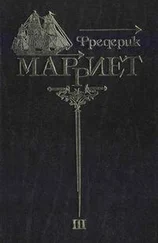
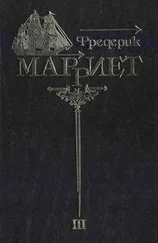
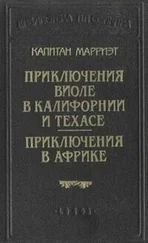


![Фредерик Марриет - Приключения в Америке [litres]](/books/432340/frederik-marriet-priklyucheniya-v-amerike-litres-thumb.webp)
